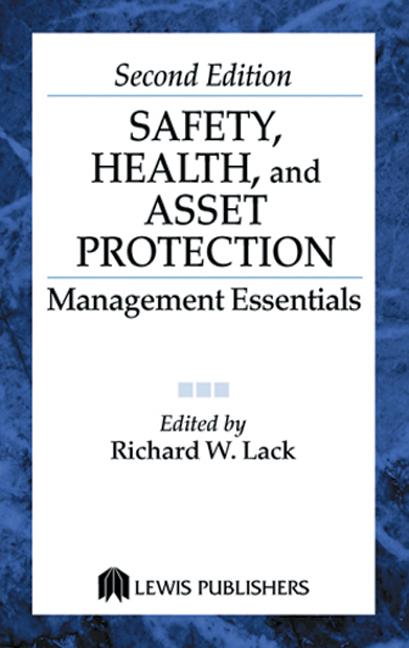Fall prevention’s efficacy with wood frames, a new AIHA president, the biggest EHS problems for European workers and Boeing flight attendants say they’re being exposed to more than turbulence. These were among the top occupational safety, public safety and health-related stories featured on ISHN.com.
OSHA adds key hazards for investigators’ focus in healthcare inspections
Targeting some of the most common causes of workplace injury and illness in the healthcare industry, OSHA announced that it is expanding its use of enforcement resources in hospitals and nursing homes to focus on: musculoskeletal disorders related to patient or resident handling; bloodborne pathogens; workplace violence; tuberculosis and slips, trips and falls.
Revised workplace first aid kit standard expands supplies, intros two classes of kits
The International Safety Equipment Association (ISEA) has received American National Standards Institute (ANSI) approval for ANSI/ISEA Z308.1-2015, American National Standard-Minimum Requirements for Workplace First Aid Kits and Supplies, a subsequent revision to the 2014 edition.
Top risk factors in European workplaces: psychosocial & musculoskeletal
Psychosocial and musculoskeletal risk factors are the most widespread in Europe’s workplaces, according to the Second European Survey of Enterprises on New and Emerging Risks (ESENER-2). The results of this survey — which collected responses from almost 50,000 workplaces — were unveiled earlier this month at the European Parliament.
Deadline nears for confined space in construction rule compliance
OSHA’s new regulation regarding confined spaces in the construction industry goes into effect August 1, and construction companies and contractors are getting ready for it.
Open-flame heater likely cause of oil rig fire that killed 3 and injured 2
Dan D Drilling cited for worker safety violations
An open-flame heater on the floor of a rig likely sparked the fire that killed three natural gas drillers and seriously injured two others in a December 2014 drilling rig fire in Coalgate, the U.S. Department of Labor's Occupational Safety and Health Administration has concluded.
A NIOSH Science Blog post
N95 respirators use during pregnancy
Findings from recent NIOSH research
Recent NIOSH research has shed some light on the topic of the safety of N95 filtering facepiece respirators (FFR) use by pregnant workers. Women make up approximately one-half of the US work force. At any given time, about 10% of those female workers of child-bearing age (15–44 years of age) will be pregnant.
Boeing accused of exposing flight crew, passengers to “fume events”
Four flight attendants are suing Boeing for allegedly exposing them to toxic air aboard a commercial flight from Boston to San Diego. The 2013 flight was forced to make an emergency landing in Chicago after three of the four flight attendants on board lost consciousness and had to be rushed to a hospital.
3M to acquire Capital Safety
3M has announced that it has entered into a definitive agreement to acquire Capital Safety -- a leading global provider of fall protection equipment, one of the fastest-growing safety categories within the global personal protective equipment industry.
Why are some Americans hit harder by heart disease and stroke than others?
And what can be done about it?
Researchers from four institutions are exploring the differences that exist and improvements that need to be made when it comes to treating culturally diverse patients for heart disease and stroke.
OSHA cites construction company in death of heavy equipment operator
Gehring Construction & Ready Mix Concrete Inc. of Columbus, Nebraska faces $14,630 in fines after the death of an employee on April 11, 2014.
AIHA gets a new president
Daniel H. Anna, PhD, CIH, CSP inducted at AIHce
The American Industrial Hygiene Association® (AIHA) inducted Daniel H. Anna, PhD, CIH, CSP, as the new President of AIHA’s Board of Directors at the Annual Business Meeting on Thursday, June 4, during the 2015 American Industrial Hygiene Conference and Exposition (AIHce) in Salt Lake City, Utah.
Cal/OSHA continues to reduce number of compliance officers
The most populous state – and some would argue, the most progressive when it comes to worker safety issues – has a compliance officer-to-worker ratio well below that of federal OSHA.
Report: Recycling worker injury rate is 2x the average rate
A new study by environmental, occupational safety, and community benefits experts in collaboration with researchers at the University of Illinois School of Public Health finds that recycling work is unnecessarily hazardous to workers’ health and safety. Seventeen American recycling workers died on the job from 2011 to 2013.
EPA seeks input on modernizing the Risk Management Plan (RMP) rule
The U.S. Environmental Protection Agency (EPA) is inviting small businesses, governments, and not-for-profit organizations to participate as Small Entity Representatives (SERs) for a Small Business Advocacy Review (SBAR) Panel.
Double hazard: BP oil spill workers were sickened by toxic release from nearby facility
U.S. finalizes settlement with Georgia-based Millard Refrigerated Services over ammonia release
The EPA and the U.S. Department of Justice (DOJ) have announced a final settlement with Millard Refrigerated Services that resolves alleged violations of the Clean Air Act, Emergency Planning and Community Right-to-Know Act and Comprehensive Environmental Response, Compensation, and Liability Act for an airborne release of ammonia from Millard’s Theodore, Alabama, facility in 2010.
Study: Fall prevention works, even anchored to wood frame
Fall protection on residential construction sites has long been the subject of controversy, according to Pete Stafford, Executive Director of the Center for Construction Research and Training (CPWR).
New York passes law to protect nail salon workers
Employees of the estimated 3,000 nail salons in New York state have some new regulatory protections, after the passage of bills A. 7630A and S. 05966 by the state legislature. The legislation ensures that trainees have access to proper training on safety and preventing infection and allows the state to shut down salons that repeatedly flout the law and evade health and safety inspections by operating without a license.


